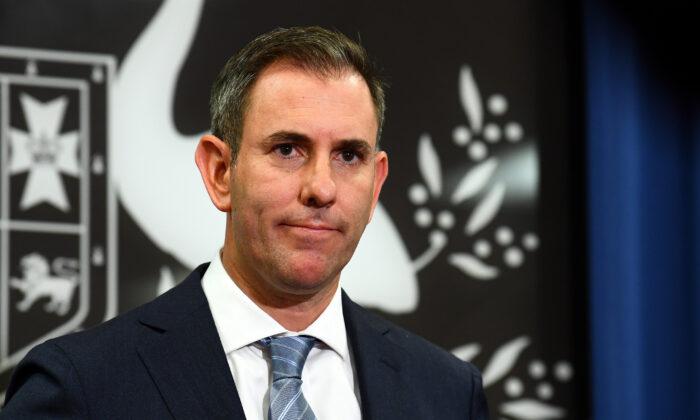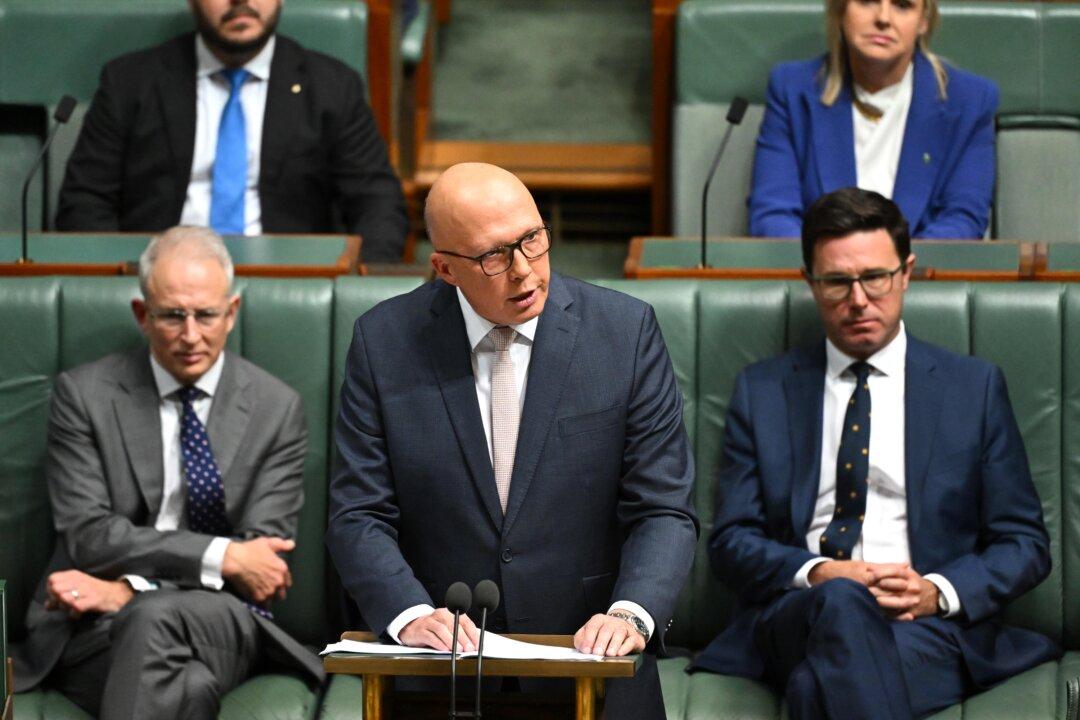Australia’s federal treasurer, Jim Chalmers, is a young man in a hurry. While his mentor was Treasurer Wayne Swan, for whom he worked between 2007 and 2013, he appears to have Paul Keating’s trajectory in mind—treasurer to the prime minister.
By contrast, Chalmer’s 11 months have been relatively mundane, and the opportunity to stamp his mark is retreating in front of him.
In a three-year electoral cycle, the first election is the one where you make the changes, the second when you bed them in and soothe any pain and the third when you reap the rewards at the ballot box.
Labor has botched the rhythm, but if Chalmers doesn’t move this budget, then it will be the next election cycle before he can hope to achieve much.
He is working in a challenging environment. National resources are stretched thin as excessive borrowing by states and individuals work its way through the economy through excessive capital spending, resulting in inflation and make the cost of living and housing affordability top issues.
This has been compounded by the return to normalcy after COVID. It will be further compounded by his own colleagues, whose spending decisions and wholesale vandalism of the wage-setting process are baking inefficiencies and rigidities into the economy.

What Should He Do?
If he wants to follow Keating, the secret would be to negotiate with the unions to keep wages low while rooting out economic inefficiencies, increase the domestic savings rate, and grow output through productivity.He could also look to genuine savings (not dressing up increased taxes as “savings”), some encouragement to increasing productivity, and rejigging the tax base to rely more on efficient taxes.
In the area of savings, there are some obvious areas. First, the National Disability Insurance Scheme (NDIS) needs to be brought under control. It is too easily available, and there is no means-testing, plus benefits are available for sometimes frivolous purposes, like drives in the country.
He should also look to recoup more of the cost from the states.
The NDIS was supposed to be shared 50/50 between the states and the commonwealth because it took over responsibilities from the states. Instead, the split is now 66 percent Commonwealth to 34 percent states.
That represents $5.44 billion (US$3.63 billion) the states are avoiding, with the NDIS costing $34 billion. But within 10 years, when it is expected to have ballooned to $90 billion (itself alarming), that $5.44 billion will be $14.4 billion.
He should also resist the urge to increase Medicare payments.
While bulk billing is declining, the scheme was never designed so that everyone was bulk billed. We have a doctor shortage, which is not surprising—if patients bear no cost in using medical services, then they are going to overuse them.

Another cost area deserving attention is the old age pension. Retirement ought to be optional, particularly as given the gradual aging of the population, we will not be able to continue to support our economy if only people under 65 are working.
Current pension arrangements contain plenty of welfare traps that make total retirement almost compulsory for senior Australians, even if work would improve their finances, emotions, and health.
The last area where money could be saved is in the energy transition.
The Big Productivity Issue
At the same time as he trims unnecessary spending, he could invest some of it in measures that will boost productivity.One idea would be not just to accelerate depreciation but to allow companies to depreciate their plant and equipment at whatever rate they choose.
This measure wouldn’t cost much as it mostly shifts the timing of when tax is paid around. If you completely write your plant off this year, it will depress your income now, but at the cost to you of increasing it in later years.
You pay less tax today and more tomorrow.
The main advantage is that it makes it easier for profitable and quickly growing companies to scale up even faster, and those are the sort of companies that you want.
They are also likely to buy more plants and equipment, and every time they do, you collect GST on it, offsetting some of the tax-deferred, and they probably also employ more taxpayers.
Another area where he could make a difference is company tax. Company profits that are distributed are already treated as though they are the earnings of the shareholders, while those that are retained are taxed at the company tax rate.

So what does a company do with retained profits? It invests them.
Company profits are, in fact, a tax on investment. The sensible thing to do would be to lower, or even eliminate, the tax on retained profits as a way of dramatically increasing productivity.
It would probably be too much to ask, but Capital Gains Tax is also a form of double taxation, and rather than increasing and adjusting it for inflation, as the treasurer is apparently planning to do, he should be looking to eliminate it altogether for a property that is held for longer than a reasonable period.
As the capital value of an item is the sum of all future cash flows, discounted at an appropriate rate, an increase in the value of a capital item, giving rise to gains, would be because expectations of future cash flows have been adjusted up. Those cash flows are called income, and under normal circumstances, they are taxed when they are earned.
Decentralisation
Another area I’d look at if I were the treasurer is relations with the states. Our federation is not working properly and is too heavily centralised.While some degree of uniformity is efficient, the strength of federations is in their variety which creates competition and innovation in governance.
He should foreshadow a reshaping of the Commonwealth Grants Commission, which divvies up the GST between the states.
At present, it uses an arcane formula. In the future, it should just return the GST to the states in proportion to where it was generated.
Western Australia, which is the most solvent and entrepreneurial state, is penalised by the current system, and the other states are dissuaded from copying it. This needs to change.
One last thing would be to use the Commonwealth’s specific purposes grants to force the states to reform how land is approved, developed, and serviced so as to sustainably solve the housing affordability crisis.
The one thing the treasurer shouldn’t fixate on is the size of this year’s deficit.
He needs to be looking ahead at how to grow the economy so that it naturally disappears in a few years’ time. That might require a little more expenditure in the short term.





